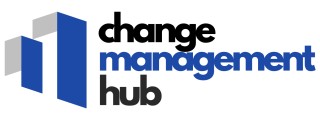
Understanding the Role of an Instructional Designer
Understanding the Instructional Design Profession
Diving into the instructional design field requires a solid grasp of what this evolving role entails. Primarily, an instructional designer plays a critical role in creating effective learning environments that combine educational theory with practical application. The focus lies on developing curriculum and training materials that cater to all learning styles, utilizing varied formats such as elearning modules, workshops, and digital resources.
Professionals in this field employ a blend of skills, including exceptional abilities in curriculum development, user-centered design, and use of learning technology. They are adept at crafting instructional systems that enhance customer satisfaction by meeting identified learning objectives.
Experience in using authoring tools like Articulate Storyline can be invaluable, as it's a staple in the toolkit for many instructional designers. This career path often demands working cross-functionally; thus, an instructional designer must possess excellent collaboration skills to interact successfully with subject matter experts and other stakeholders.
For those aspiring to senior-level roles, years of experience in instructional design and a comprehensive understanding of adult learning principles can open doors to leadership positions. These roles often carry responsibilities such as shaping organizational learning strategies and mentoring junior team members.
While maintaining a focus on instructional design principles, it's essential to articulate your skills and experience effectively on your resume. This involves a strategic approach to summarizing your career achievements and showcasing your ability to facilitate growth and learning in various educational contexts, which you'll find interlinks with other critical aspects of resume building.
Key Elements of an Instructional Designer Resume
Essential Components of an Instructional Designer's Professional Snapshot
Crafting an instructional designer resume that captures attention requires a nuanced understanding of the role's multifaceted nature. Every section of your resume should reflect your journey in instructional design, emphasizing both your capabilities and aspirations. Here are some of the crucial elements that can make your resume stand out.- Professional Summary: Begin with a succinct summary encapsulating your instructional design experience and career aspirations. Highlight the number of years in the industry, significant contributions in curriculum development, and a glimpse of your skills in learning technology.
- Skills and Competencies: List key skills such as eLearning course design, adult learning principles, and instructional systems development. Consider mentioning your proficiency with tools like Articulate Storyline to demonstrate technical skills.
- Professional Experience: Detail your work experience focusing on responsibilities and achievements that showcase your capability in transforming educational content into engaging experiences. Mention your cross functional collaborations and any subject matter expertise.
- Education and Certifications: Include your educational background, relevant certifications in instructional design, and any specialized training that sets you apart. This section is crucial for demonstrating your foundational knowledge and continual professional development.
- Awards and Recognitions: If applicable, list any awards that emphasize your dedication and innovative approaches in the field of instructional design and development.
- Portfolio or Links: Provide links to samples or templates of your work. This could include links to eLearning resources you've developed or examples of successful instructional design projects.
Highlighting Change Management Skills
Emphasizing Adaptability in Change Management
As an instructional designer, it's essential to exhibit abilities in change management, a key quality highly regarded by hiring managers across the industry. When crafting your resume, showcasing these skills becomes crucial. Change management involves the capacity to adapt learning experiences and technologies to meet evolving business needs—vital as organizations strive for continuous improvement.- Adaptability: Demonstrating flexibility and the ability to adjust curriculum development strategies under changing circumstances should be a priority on your design resume. Highlight projects where you successfully navigated shifts in project requirements to bolster outcomes and drive customer satisfaction.
- Collaboration: Working cross functional teams and engaging with subject matter experts can enhance the curriculum's effectiveness. Your capacity to foster partnerships across departments is an advantageous skill.
- Leadership: While an entry level position may not require extensive leadership duties, illustrating moments where you took initiative in change management can significantly bolster your profile. Providing examples where you influenced a project's direction or supported team members through transitions can be impactful.
- Tech Proficiency: The use of tools such as Articulate Storyline in your instructional design showcases your readiness to incorporate advanced learning technology innovations, which are often pivotal in successful change management strategies.
For more insights into improving these skills, you might find this article on enhancing change management skills beneficial. It delves deeper into developing expertise necessary for adapting and evolving within the instructional design landscape.
Tailoring Your Resume for Different Opportunities
Enhancing Your Resume for Diverse Opportunities
When crafting an instructional designer resume, it's crucial to tailor it to suit various job opportunities. Each position may demand a distinct set of skills and experiences, and acknowledging these differences can significantly enhance your resume’s effectiveness. Consider the following strategies:- Analyze Job Descriptions: Review the job descriptions for common themes and requirements. This allows you to identify the skills and experiences that hiring managers look for in candidates. Incorporate relevant keywords and language from these descriptions directly into your resume, especially when applying for senior instructional designer roles.
- Highlight Relevant Experience: Whether you are an entry-level candidate or have years of experience in instructional systems or curriculum development, emphasize roles and projects that align with the specific job responsibilities. Tailor your resume by showcasing examples that demonstrate your ability to meet the needs of the position, such as experience with articulate storyline or specific learning technology.
- Prioritize Skills and Accomplishments: Change the order of sections based on what you think will create the most impact. For instance, if the job prioritizes technology proficiency, place your skills instructional section prominently to capture attention.
- Customize for Industry Specifics: Different industries might emphasize various aspects of instructional design. For eLearning positions, highlight your experience in designing online courses or using specialized design principles. In adult learning environments, focus on your strategies to enhance adult education.
- Leverage Templates and Examples: Using resumes examples that best represent your strengths can be effective. Templates designed for instructional designers can guide you on structuring your resume effectively while making room for customization.
Common Mistakes to Avoid
Sidestepping Common Missteps in Your Instructional Design Journey
Navigating the pathway from an entry level position to a senior instructional role involves refining your resume to steer clear of typical pitfalls that can hinder your career advancement. For instructional designers, effectively communicating your skills and experience is paramount. To help you avoid common mistakes, here's a breakdown of some frequent errors and how to steer clear of them in your design resume:
- Lacking Specificity: Touting experience in curriculum development or eLearning without concrete examples isn't enough. Instead, showcase specific design principles you've applied in past projects or training sessions you've developed. Mention tangible outcomes from using learning technology, articulate storyline, or other relevant tools.
- Overlooking Key Skills: Highlighting change management, instructional systems, or cross functional teamwork makes your resume shine. Engage hiring managers by featuring skills instructional designers value, such as customer satisfaction or adult learning methodologies, outlining where you've demonstrated these abilities.
- Generic Templates: While leveraging templates can save time, a one-size-fits-all design resume might not fully capture your unique qualifications. Tailor each application to reflect the specific job you're pursuing, underscoring the skills and experience most relevant to the position.
- Ignoring Continuity in Career Progression: Your resume should illustrate a clear, logical journey from developing foundational education skills to assuming senior instructional duties. Reflect your years of experience by mapping consistent growth and learning, showing you possess both entry level adaptability and senior level insight.
- Missing Keywords: Keywords are crucial for passing through applicant tracking systems. Incorporate terms like 'instructional design', 'curriculum development', and 'learning technology' naturally within your descriptions to align your application with project requirements.
Taking these tips into account will transform your designer resume into a persuasive document that speaks to hiring managers. Craft it with attention to detail, ensuring every element underscores your readiness for the instructional challenges ahead.
Leveraging Online Tools and Resources
Maximizing the Use of Digital Tools for Your Instructional Design Resume
In today's rapidly evolving job market, leveraging online tools and resources can be a game-changer when crafting the perfect instructional designer resume. While some tools are designed to streamline the resume creation process, others help you better articulate your experiences in areas such as curriculum development, learning technology, and instructional systems.
- Online Templates: Utilizing professionally designed templates can help you present your skills and experiences in a structured and visually appealing way. There are numerous resume examples available online that cater to both entry-level and senior instructional designer positions.
- Design Platforms: Websites like Canva or Adobe Express allow designers to incorporate custom elements and align their resumes with design principles, enhancing both readability and visual appeal.
- Networking on Professional Platforms: Updating your LinkedIn profile to reflect your instructional design experiences and development skills forms an essential part of your job-seeking strategy. Networking with other instructional designers through professional groups can provide insights into current industry trends.
- SEO Optimization: Incorporate keywords like ‘articulate storyline,’ ‘eLearning,’ and ‘learning technology’ to optimize your resume for both hiring managers and applicant tracking systems.
- Showcasing Examples of Your Work: Platforms that host portfolios allow you to display work samples, like training programs you've designed or eLearning materials you've created. This can give potential employers a concrete understanding of your capabilities in instructional systems and adult learning.
For those in the instructional design field looking to further refine their resumes, consider seeking additional resources that can provide career guidance, resume tips, and examples tailored to your area of expertise. Ensuring your resume reflects your unique strengths and capabilities, while adhering to professional resume standards, is key to your overall career development.













